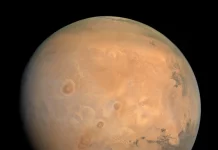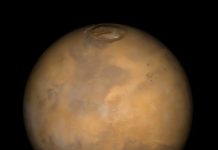
Thirteen years after it first touched down on the Red Planet, NASA’s Curiosity rover is proving it still has a lot of exploring left to do.
Thanks to smart new upgrades, Curiosity can now multitask and manage its own energy better—helping it squeeze more science out of every Martian day.
Curiosity landed on Mars in 2012 with a big mission: to explore the planet’s ancient climate and discover whether it could once have supported life.
It’s now climbing Mount Sharp, a towering 5-kilometer-high mountain in Gale Crater, and recently entered a region filled with fascinating rock formations called boxwork.
These hardened ridges were likely formed by underground water billions of years ago and could hold clues about whether life ever survived below the surface as the planet dried out.
All this science takes a lot of energy.
Curiosity has a robotic arm, cameras, heaters, radios, and ten scientific instruments to power.
Unlike some earlier Mars missions that relied on solar panels, Curiosity uses a special nuclear battery called an MMRTG (Multi-Mission Radioisotope Thermoelectric Generator).
This power source creates electricity from the heat of decaying plutonium and is famous for its long lifespan—Voyager spacecraft have used similar systems since 1977.
While Curiosity still has plenty of power, its team at NASA’s Jet Propulsion Laboratory (JPL) in California has been looking for ways to make the most of every watt. As the plutonium in the battery slowly decays, it takes longer to recharge the rover’s batteries, which means less time available each day for science.
To solve this, engineers have found ways for the rover to multitask and manage its schedule more efficiently.
For most of its mission, Curiosity was told to complete one task at a time before taking a nap to recharge. But now, the team has safely taught the rover to do two or three things at once—like sending data to orbiters while driving or using its robotic arm while snapping photos.
This saves time and energy because it means fewer moments when all systems have to be active at once.
Another smart trick allows Curiosity to decide on its own when to sleep. Since engineers usually give the rover extra time to complete its tasks (just in case something slows it down), Curiosity now checks to see if it’s finished early—and if so, it puts itself to sleep.
These small energy savings add up, helping the rover stay productive longer.
Over the years, engineers have also made other improvements. They reprogrammed the robotic drill after it had mechanical trouble, updated the driving software to better handle rough terrain, and created a fix when a color filter stopped turning on one of its cameras.
They even developed a system to reduce wear on the rover’s metal wheels, which have taken a beating from sharp Martian rocks. Despite a few punctures, Curiosity has already driven 22 miles (35 kilometers) and could travel for many more years.
As Curiosity matures, it’s becoming more independent—like a teenager learning to take on more responsibility. These upgrades aren’t just helping the rover survive; they’re helping it thrive, making sure it can keep unlocking Mars’ secrets for years to come.
Source: NASA.



